Showing Spotlights 1345 - 1352 of 2776 in category All (newest first):
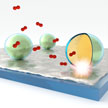 Conventional probing methods for localized surface properties often rely on ultra-high vacuum conditions. Consequently, approaches such as scanning tunneling microscopy have difficulties to resolve surface changes under realistic reaction conditions. Tip-enhanced Raman spectroscopy can investigate arbitrary substrates and more diverse reaction environments but suffers from weak Raman scattering signals. Also, the fabrication of robust, reproducible, and highly enhancing tips is still challenging. Researchers have now presented a novel platform for the optical detection of localized chemical reactions on surfaces that can help overcome these difficulties by offering a sensitive, reliable, and easy-to-implement technique to probe local chemical reactions while they occur under diverse environmental conditions.
Conventional probing methods for localized surface properties often rely on ultra-high vacuum conditions. Consequently, approaches such as scanning tunneling microscopy have difficulties to resolve surface changes under realistic reaction conditions. Tip-enhanced Raman spectroscopy can investigate arbitrary substrates and more diverse reaction environments but suffers from weak Raman scattering signals. Also, the fabrication of robust, reproducible, and highly enhancing tips is still challenging. Researchers have now presented a novel platform for the optical detection of localized chemical reactions on surfaces that can help overcome these difficulties by offering a sensitive, reliable, and easy-to-implement technique to probe local chemical reactions while they occur under diverse environmental conditions.
Mar 18th, 2013
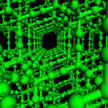 Carbon is the fourth-most-abundant element in the universe and, depending on the arrangements of carbon atoms, takes on a wide variety of forms, called allotropes. Carbon allotropes exhibit unique properties of strength and electrical conductivity. Solid carbon at room temperature has two classical structures: diamond and graphite. In 1985 the discovery of the existence of a third and new carbon allotrope containing sixty perfectly symmetrically arranged carbon atoms (C60) meant a major breakthrough and opened a novel field of carbon nanochemistry. Then, in 1991, carbon nanotubes were discovered and graphene in 2004. Now, a research group in China has designed a novel carbon allotrope they've named D-carbon.
Carbon is the fourth-most-abundant element in the universe and, depending on the arrangements of carbon atoms, takes on a wide variety of forms, called allotropes. Carbon allotropes exhibit unique properties of strength and electrical conductivity. Solid carbon at room temperature has two classical structures: diamond and graphite. In 1985 the discovery of the existence of a third and new carbon allotrope containing sixty perfectly symmetrically arranged carbon atoms (C60) meant a major breakthrough and opened a novel field of carbon nanochemistry. Then, in 1991, carbon nanotubes were discovered and graphene in 2004. Now, a research group in China has designed a novel carbon allotrope they've named D-carbon.
Mar 15th, 2013
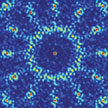 Organic solar cells are regarded as an emerging technology to become one of the low-cost thin-film alternatives to the current dominating silicon photovoltaic technology, due to their intrinsic potential for low-cost processing (high-speed and at low temperature). However, it is generally believed that the PCE needs to be improved to above 10% in order for organic solar cells to become truly competitive in the marketplace. Currently, the best reported PCE, achieved in laboratories, lies in the range of 6.7% to 7.6% for molecular, and 8.3% to 10.6% for polymeric OPVs.
Organic solar cells are regarded as an emerging technology to become one of the low-cost thin-film alternatives to the current dominating silicon photovoltaic technology, due to their intrinsic potential for low-cost processing (high-speed and at low temperature). However, it is generally believed that the PCE needs to be improved to above 10% in order for organic solar cells to become truly competitive in the marketplace. Currently, the best reported PCE, achieved in laboratories, lies in the range of 6.7% to 7.6% for molecular, and 8.3% to 10.6% for polymeric OPVs.
Mar 13th, 2013
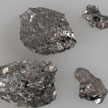 Strange new materials experimentally identified just a few years ago are now driving research in condensed-matter physics around the world. Tthese "strong 3-D topological insulators" - TIs for short - are seemingly mundane semiconductors with startling properties. Topological insulators offer unique opportunities to control electric currents and magnetism, and are promising materials for future spintronic applications or could provide access to novel, fascinating physical phenomena. While so far, only synthetic TIs had been experimentally identified, researchers in Germany report the discovery of a natural occurring topological insulator: the mineral Kawazulite.
Strange new materials experimentally identified just a few years ago are now driving research in condensed-matter physics around the world. Tthese "strong 3-D topological insulators" - TIs for short - are seemingly mundane semiconductors with startling properties. Topological insulators offer unique opportunities to control electric currents and magnetism, and are promising materials for future spintronic applications or could provide access to novel, fascinating physical phenomena. While so far, only synthetic TIs had been experimentally identified, researchers in Germany report the discovery of a natural occurring topological insulator: the mineral Kawazulite.
Mar 11th, 2013
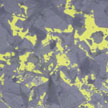 Unlike silicon, graphene lacks an electronic band gap and therefore has no switching capability; which is essential for electronics applications. Opening an energy gap in graphene's electron energy spectrum is therefore a critical prerequisite for instance for creating graphene transistors. One method of obtaining a bandgap is to use reduced graphene oxide, an inexpensive material with an industrial-scalable production route. Researchers have now managed to grow and extend graphene oxide out of graphene oxide flake templates.
Unlike silicon, graphene lacks an electronic band gap and therefore has no switching capability; which is essential for electronics applications. Opening an energy gap in graphene's electron energy spectrum is therefore a critical prerequisite for instance for creating graphene transistors. One method of obtaining a bandgap is to use reduced graphene oxide, an inexpensive material with an industrial-scalable production route. Researchers have now managed to grow and extend graphene oxide out of graphene oxide flake templates.
Mar 8th, 2013
 Just like other industry sectors, the furniture industry is trying to get more efficient by minimizing material use, minimizing waste, and optimizing energy consumption while improving the performance of their products. Nanotechnology and nanomaterials can play an important role in achieving these goals. A recent project mapped current uses and near future perspective on nanomaterials in the European furniture sector. It looked at innovative materials and potentials of nanotechnology that may positively affect the furniture sector; it also considered possible health risks and steps towards workplace prevention strategies following the precautionary principle.
Just like other industry sectors, the furniture industry is trying to get more efficient by minimizing material use, minimizing waste, and optimizing energy consumption while improving the performance of their products. Nanotechnology and nanomaterials can play an important role in achieving these goals. A recent project mapped current uses and near future perspective on nanomaterials in the European furniture sector. It looked at innovative materials and potentials of nanotechnology that may positively affect the furniture sector; it also considered possible health risks and steps towards workplace prevention strategies following the precautionary principle.
Mar 7th, 2013
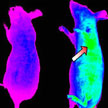 Currently developed nanotechnology-based drug delivery systems, either 'passively targeted' or 'actively targeted', do not significantly improve the delivery of drugs to target tumors. Scientists in China now propose a new-generation nanocarrier that integrates various desired functions into a single nanosystem, which can harmonize with the complex physiological environment and display different properties sequentially, thus resulting in an excellent targeting effect and satisfactory biodistribution of drugs.
Currently developed nanotechnology-based drug delivery systems, either 'passively targeted' or 'actively targeted', do not significantly improve the delivery of drugs to target tumors. Scientists in China now propose a new-generation nanocarrier that integrates various desired functions into a single nanosystem, which can harmonize with the complex physiological environment and display different properties sequentially, thus resulting in an excellent targeting effect and satisfactory biodistribution of drugs.
Mar 5th, 2013
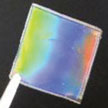 So-called shape memory polymers have the ability to reassume their original shape following temporary deformation. This function can be activated by means of external stimuli such as temperature change, light, or magnetic fields. Researchers have now shown that they can mold shape memory polymers into shapes relevant for micro-optics, and that they can exploit shape memory effects in this context to develop new kinds of programmable optical components. They demonstrate a series of deformable, shape-memorizing micro-optics using a shape memory elastomer.
So-called shape memory polymers have the ability to reassume their original shape following temporary deformation. This function can be activated by means of external stimuli such as temperature change, light, or magnetic fields. Researchers have now shown that they can mold shape memory polymers into shapes relevant for micro-optics, and that they can exploit shape memory effects in this context to develop new kinds of programmable optical components. They demonstrate a series of deformable, shape-memorizing micro-optics using a shape memory elastomer.
Mar 4th, 2013
 Conventional probing methods for localized surface properties often rely on ultra-high vacuum conditions. Consequently, approaches such as scanning tunneling microscopy have difficulties to resolve surface changes under realistic reaction conditions. Tip-enhanced Raman spectroscopy can investigate arbitrary substrates and more diverse reaction environments but suffers from weak Raman scattering signals. Also, the fabrication of robust, reproducible, and highly enhancing tips is still challenging. Researchers have now presented a novel platform for the optical detection of localized chemical reactions on surfaces that can help overcome these difficulties by offering a sensitive, reliable, and easy-to-implement technique to probe local chemical reactions while they occur under diverse environmental conditions.
Conventional probing methods for localized surface properties often rely on ultra-high vacuum conditions. Consequently, approaches such as scanning tunneling microscopy have difficulties to resolve surface changes under realistic reaction conditions. Tip-enhanced Raman spectroscopy can investigate arbitrary substrates and more diverse reaction environments but suffers from weak Raman scattering signals. Also, the fabrication of robust, reproducible, and highly enhancing tips is still challenging. Researchers have now presented a novel platform for the optical detection of localized chemical reactions on surfaces that can help overcome these difficulties by offering a sensitive, reliable, and easy-to-implement technique to probe local chemical reactions while they occur under diverse environmental conditions.
 Subscribe to our Nanotechnology Spotlight feed
Subscribe to our Nanotechnology Spotlight feed





